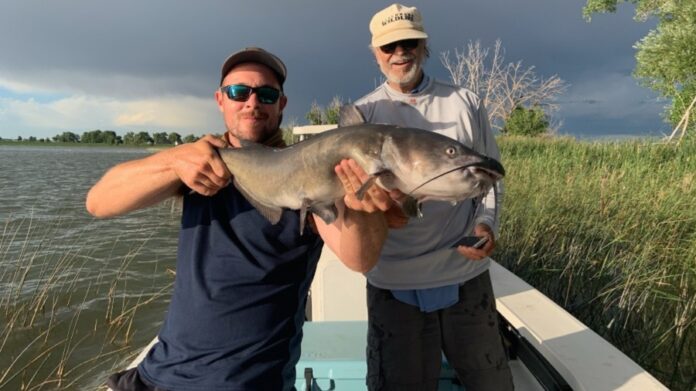Photo by T.K. Connor
This spring has been particularly cool and wet throughout much of the country, which has produced some mixed results for trout fishing, but which has been great for warmwater reservoir fishing. The extra rain has filled many of them back up to capacity, creating abundant flooded shoreline areas full of food, and the cooler, cloudier days have kept fish comfortable there, delaying their need to seek out deeper water. So if you’ve been sitting around waiting for the rivers to drop back into shape, consider grabbing a 6- to 8-weight and heading out to a nearby reservoir in the meantime. Making the transition to this type of fly-fishing can be tricky, so here are three tips to keep in mind when you go.
1. Stay Close to Shore
It may be tempting to believe that longer casts will result in more chances to hook up–and occasionally that is indeed the case–but your fly can only sink so fast or so deep, so it’s usually more efficient to concentrate on the shallower water within 30-40 feet from shore. Besides, adult fish seek out the shallows this time of year for both feeding and spawning, so it’s likely many of them will be close to shore right now, anyway. Move quietly, try to keep your shadow off the water, and don’t hesitate to cast at even the slightest hint of a fish, because you may only get one quick shot.

Photo by T.K. Connor
2. Bring a Variety of Flies and Lines
Unless you’re a regular visitor, it’s hard to predict what kind of opportunities you might encounter on a warm reservoir, because there are so many different species and scenarios that could pop up. Sometimes, the carp are chowing down on the surface, or tailing in the mud. Other days, you might spot some largemouth bass or northern pike skulking around the boat launch, or you could get lucky enough to experience a full-on wiper blitz. Whatever ends up happening, you’ll want to have a broad selection of nymphs, streamers, and poppers to cover any situation. I’ve had great luck with The Worm, Lefty’s Deceiver, and good old-fashioned bass poppers, but many different fly patterns will work. It’s nice to have two rods set up: one rigged with floating line and monofilament for sight-fishing or poppers, and the other with full-sinking line and fluorocarbon for fishing streamers out a bit deeper.

Photo by Evan Jones
3. Pace Yourself
Even when the warmwater fishing is good, it can be very hit-or-miss. The fish are often balled up into schools, and/or constantly roving around the lake in search of food, which can reduce your chances of running into them on any given day. And unless they’re disturbing the surface, the fish are often impossible to see, which further narrows your chances of being in the right place at the right time. Just remember that much depends on chance: you might hit the jackpot on your first cast, but it’s more likely that you’ll spend some fishless hours–or maybe days–before you finally get it right, so try not to be discouraged if it doesn’t come together right away.
Evan Jones is the assistant editor of the Orvis Fly Fishing blog.
Credit: Source link































